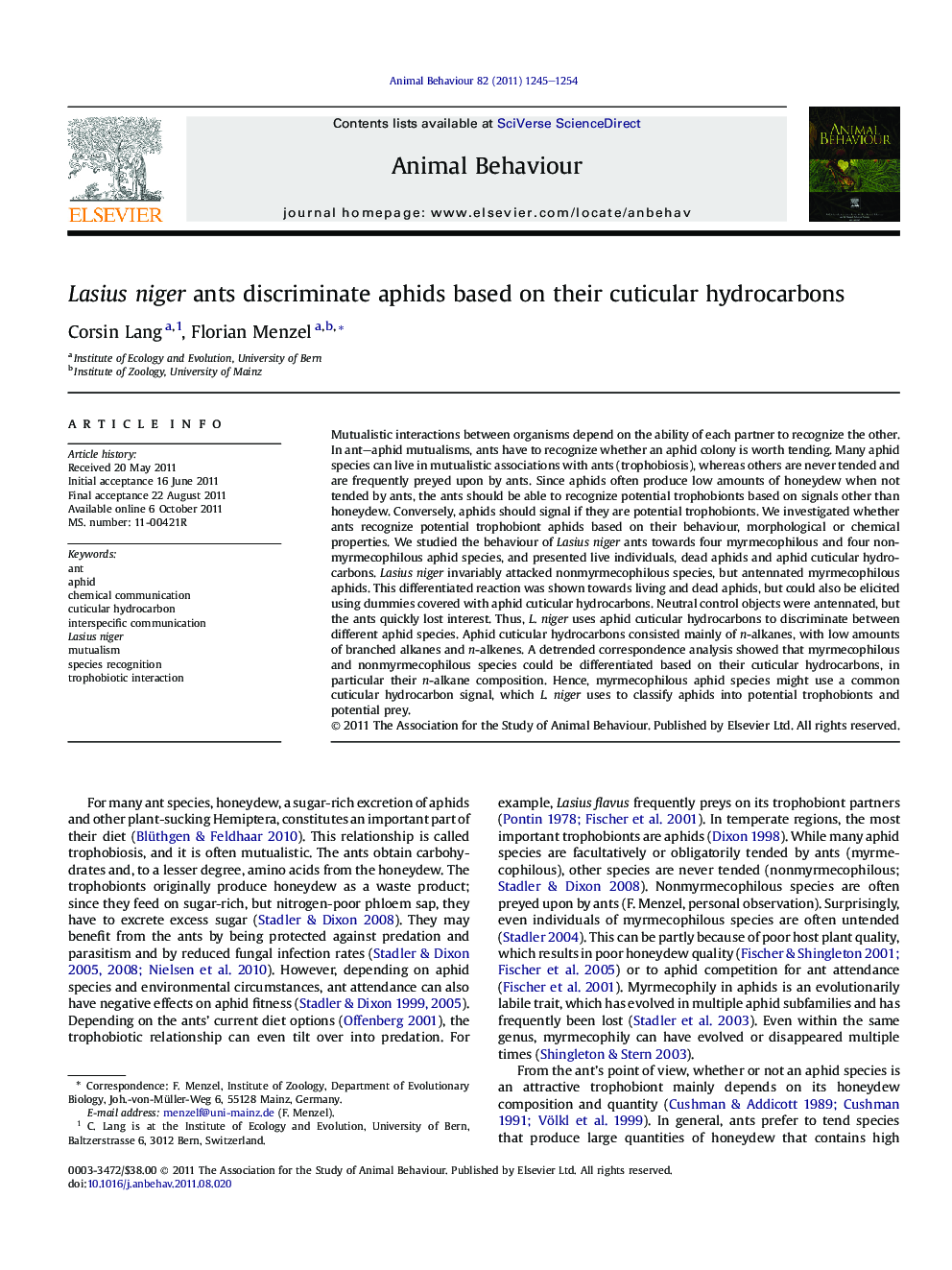| Article ID | Journal | Published Year | Pages | File Type |
|---|---|---|---|---|
| 2416858 | Animal Behaviour | 2011 | 10 Pages |
Mutualistic interactions between organisms depend on the ability of each partner to recognize the other. In ant–aphid mutualisms, ants have to recognize whether an aphid colony is worth tending. Many aphid species can live in mutualistic associations with ants (trophobiosis), whereas others are never tended and are frequently preyed upon by ants. Since aphids often produce low amounts of honeydew when not tended by ants, the ants should be able to recognize potential trophobionts based on signals other than honeydew. Conversely, aphids should signal if they are potential trophobionts. We investigated whether ants recognize potential trophobiont aphids based on their behaviour, morphological or chemical properties. We studied the behaviour of Lasius niger ants towards four myrmecophilous and four nonmyrmecophilous aphid species, and presented live individuals, dead aphids and aphid cuticular hydrocarbons. Lasius niger invariably attacked nonmyrmecophilous species, but antennated myrmecophilous aphids. This differentiated reaction was shown towards living and dead aphids, but could also be elicited using dummies covered with aphid cuticular hydrocarbons. Neutral control objects were antennated, but the ants quickly lost interest. Thus, L. niger uses aphid cuticular hydrocarbons to discriminate between different aphid species. Aphid cuticular hydrocarbons consisted mainly of n-alkanes, with low amounts of branched alkanes and n-alkenes. A detrended correspondence analysis showed that myrmecophilous and nonmyrmecophilous species could be differentiated based on their cuticular hydrocarbons, in particular their n-alkane composition. Hence, myrmecophilous aphid species might use a common cuticular hydrocarbon signal, which L. niger uses to classify aphids into potential trophobionts and potential prey.
► Ants tend certain, but not all aphid species to obtain honeydew. ► We show that ants use aphid cuticular hydrocarbons to discriminate between tended and untended aphid species. ► Tended species possess cuticular hydrocarbons different from untended ones. ► This suggests that tended aphid species may share a common signal to communicate with ants.
